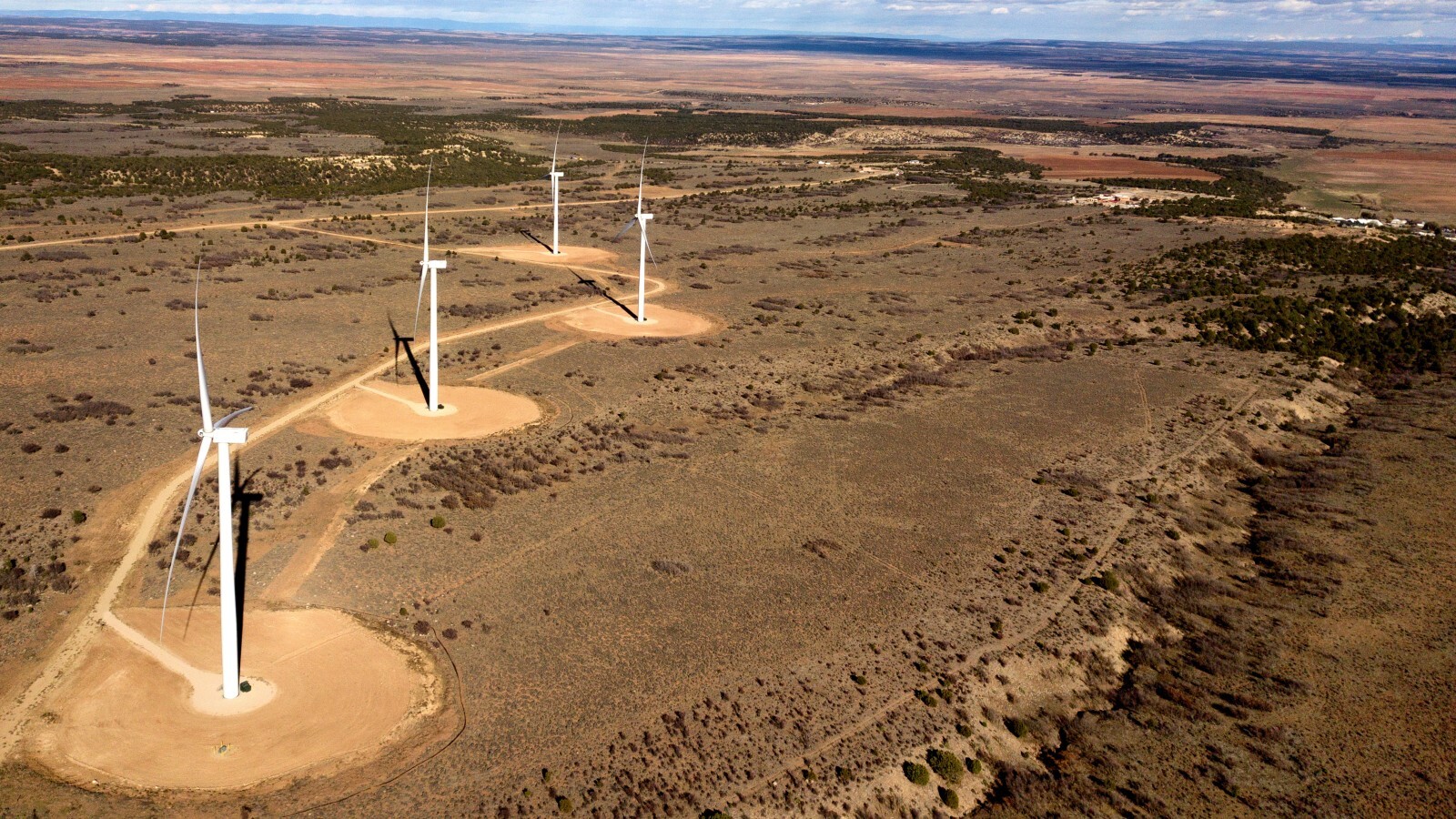Why aren’t tribal nations installing more green energy? Blame ‘white tape.’
September 23, 2024

This spring in Michigan, the Match-E-Be-Nash-She-Wish Band of Potawatomi, or Gun Lake Tribe, received 4 million dollars from the Bureau of Indian Affairs Tribal Climate Resilience program, an initiative that aims to help tribes prepare for climate change. The money will be used to buy a fleet of electric vehicles, help the nation manage a gray water system, and install a solar array that will cut the tribe’s electricity bills by around 80 percent and make the nation more self-sufficient. Underneath the two-acre solar array will be gardens of native flowers like butterfly weed, purple prairie clover, and primrose to help with the tribe’s prairie restoration efforts.
“We need to be innovative and find ways to leave less of a carbon footprint,” said Gun Lake tribal council member Virginia Vanderband. “If we can generate enough energy for our infrastructure, great.” The tribe has other investments – real estate, a construction company, a grocery store – and while the green energy project is doing well, becoming part of the energy market is “not a focus”, Vanderband said.
That seeming-lack of interest in joining the growing green energy market is the focus of a recent economic study coming out of the University of Wisconsin-Madison details barriers – like federal red tape – that tribes face when starting green energy projects. If these prohibitive barriers are not addressed, researchers tribes across the United States will lose out on 19 billion dollars of revenue by 2050.
During the early 1800s tribes were forcibly relocated to reservations. Tribes were coerced into signing treaties that ceded land for settlers in exchange for lands and rights, a process that built the United States and its wealth. Many of the reservations that tribal nations were moved to were lands that settlers deemed less economically rich, however, today much of that land is perfect for solar and wind development.
Altogether, tribal lands represent an area the size of New Mexico, but not all nations have access to land for development, leaving out hundreds of tribes from the green energy market. Out of the 574 federally recognized tribes nearly 250 do not have reservations.
In 2022, approximately 100 solar farms on reservations generated about 2 percent of all solar energy in the U.S., while around 3,000 reservation wind turbines produced about 5 percent of the nation’s wind energy. However, the University of Wisconsin-Madison study found that of 169 utility-sized wind and solar projects on reservation land, only around 5 percent are tribally owned.
In many tribal communities, poverty rates remain high–the result of federal policies that have undermined Indigenous economies–and according to the study, “the top 25 percent of reservations in terms of renewable endowments are also currently the group with the lowest incomes.” But while these tribal communities have the most to gain in terms of energy independence and new income streams, the study found that the lands in question aren’t any more likely to be developed than national parks, forests, or wildlife refuges where development is not allowed.
“That’s striking,” said Dominic Parker, the author of the study. “You have reservation areas where there’s populations living. [Wind and solar] development is not expressly prohibited. And yet, you’re not seeing any more development than these nearby areas where it is expressly prohibited.”
One reason, according to Parker, is the long process of getting permissions from tribal and federal entities, a process he calls ‘white tape’, instead of ‘red’, to describe the patronizing relationship between federal entities and tribes. Tribes are not legally allowed to fully manage land, water, and other resources that are theirs that could contribute to growing their economies. As well, Parker’s research shows that green energy development companies often go to private land near reservations where “paternalistic” federal regulatory rules don’t apply.
“Historically, when resources have been harnessed for mainstream public or private economic benefit, the consequences have often been disastrous for Indigenous peoples,” the study said. In the 1950s, federal initiatives incentivized nuclear power that eventually poisoned communities like the Navajo Nation and Hopi Tribe, while the push for dams as an energy resource decimated and flooded tribal lands in the pacific northwest.
But a big part of the green energy conversation, at least for Virginia Vanderband at Gun Lake, is keeping tribal sovereignty a priority. Just because energy initiatives are going green doesn’t mean that it’s the responsibility of tribes to go along with what the federal government wants.
“We have a social responsibility to the land to keep it clean, to only take what we need,” Vanderband said. “We must maintain our sovereignty first. We have the right to govern ourselves. This allows us to honor and preserve our culture and our way of life.”
Search
RECENT PRESS RELEASES
Related Post



